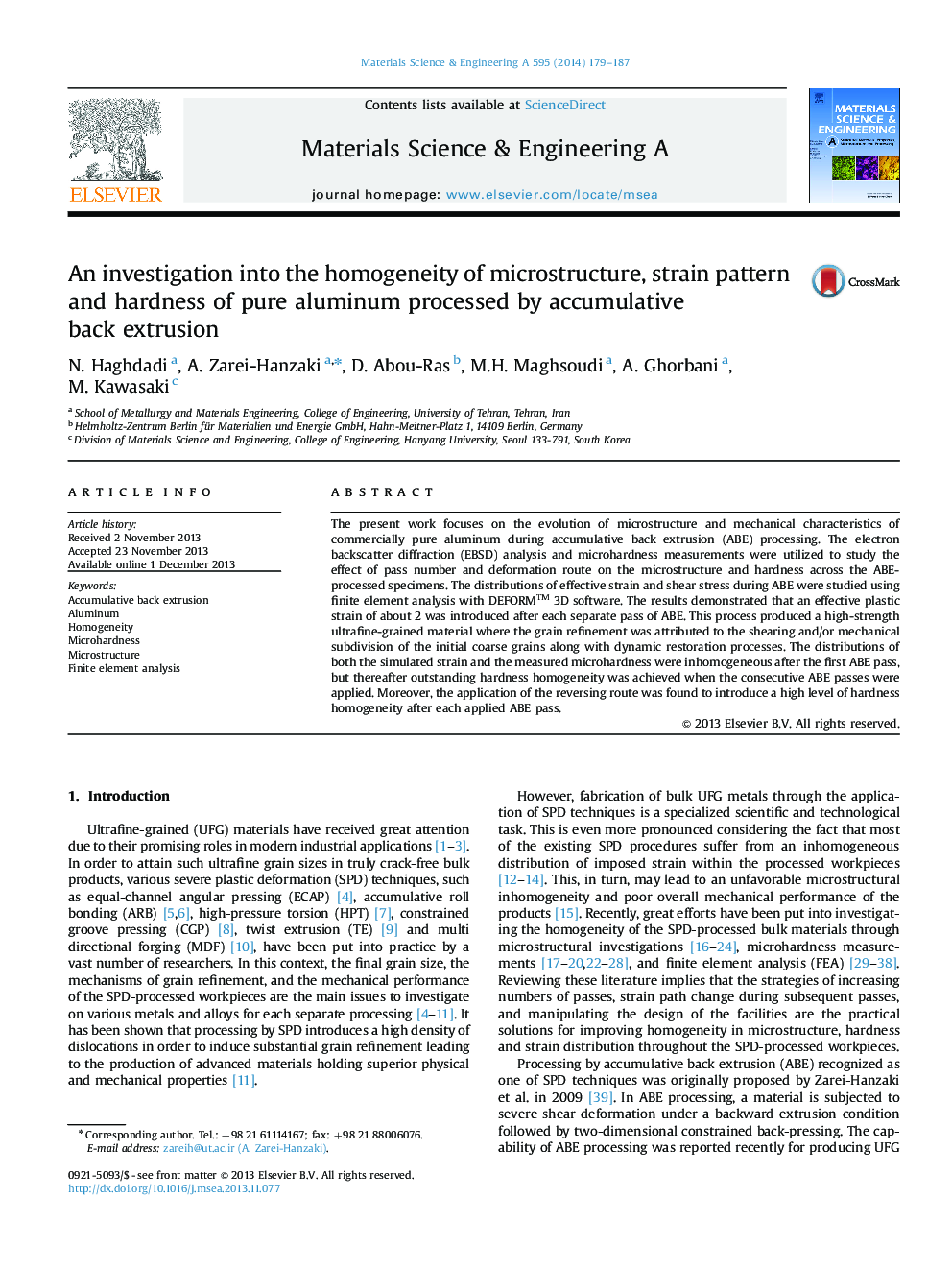| Article ID | Journal | Published Year | Pages | File Type |
|---|---|---|---|---|
| 1575511 | Materials Science and Engineering: A | 2014 | 9 Pages |
Abstract
The present work focuses on the evolution of microstructure and mechanical characteristics of commercially pure aluminum during accumulative back extrusion (ABE) processing. The electron backscatter diffraction (EBSD) analysis and microhardness measurements were utilized to study the effect of pass number and deformation route on the microstructure and hardness across the ABE-processed specimens. The distributions of effective strain and shear stress during ABE were studied using ï¬nite element analysis with DEFORMTM 3D software. The results demonstrated that an effective plastic strain of about 2 was introduced after each separate pass of ABE. This process produced a high-strength ultrafine-grained material where the grain refinement was attributed to the shearing and/or mechanical subdivision of the initial coarse grains along with dynamic restoration processes. The distributions of both the simulated strain and the measured microhardness were inhomogeneous after the first ABE pass, but thereafter outstanding hardness homogeneity was achieved when the consecutive ABE passes were applied. Moreover, the application of the reversing route was found to introduce a high level of hardness homogeneity after each applied ABE pass.
Related Topics
Physical Sciences and Engineering
Materials Science
Materials Science (General)
Authors
N. Haghdadi, A. Zarei-Hanzaki, D. Abou-Ras, M.H. Maghsoudi, A. Ghorbani, M. Kawasaki,
